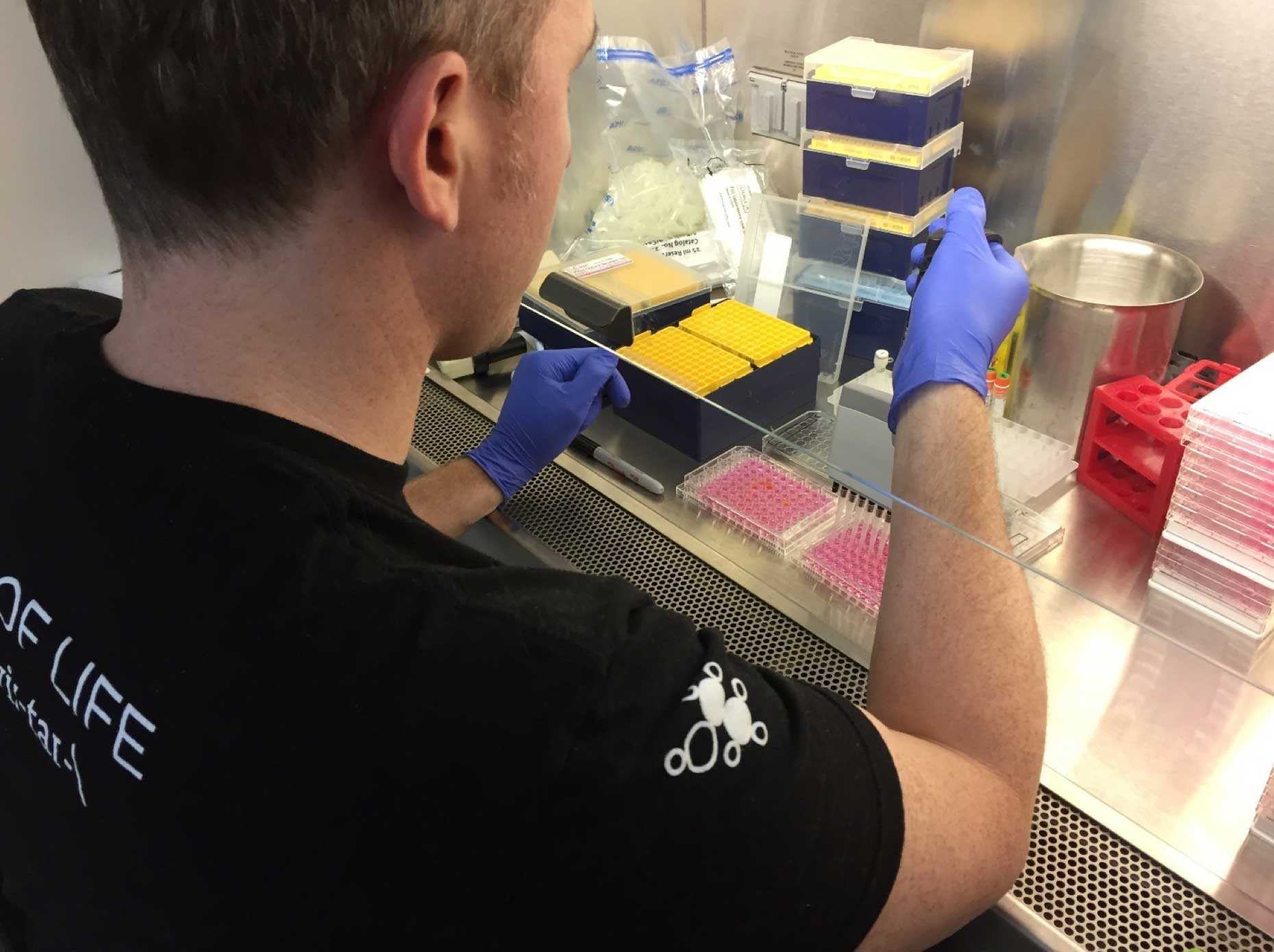Toil and Trouble
Greg Crimmins on July 28, 2017

When asked what I do, I typically respond that I am a molecular biologist. But when asked what I do—as in what I do each day in the lab—I usually say that I mix tiny little drops of liquid with other tiny drops of liquid. On any given day, I am pipetting small measures of important liquids from one place to another, hundreds of times. Ah, the glamorous life of a scientist.

Thumbs of steel
Luckily, there are robots that are really good at quickly and accurately mixing tiny drops of water together. By working with the ICCB-Lab at Harvard, a world class drug screening facility, we were able to test thousands of super-tiny drops of liquid containing individual drugs (screening = testing lots of things quickly). With our engineered cancer cells and their robotics (plus a little training), we tested 40,000 drug candidates in just over a month. That is twenty times more drugs than we tested in our pilot screen.
An interesting and frustrating issue when working with tiny, tiny drops of liquid is that a small bubble becomes a really big deal. We often need to pipette measures as small as one or two microliters (that is 0.000001 liters), or about the size of a bead of dew. On this scale, a bubble might be just as big as the entire drop of liquid I’m trying to pipette.
This problem can be particularly troublesome when working with robots, which are programmed to do one task: pick up the contents of one container and mix it with the contents of another container. The robots may not identify that they’ve only transferred an air pocket from one container to another, rather than the sample. These tiny air pockets caused us to go back to our protocol and redesign our methods before we could move one. Who would have guessed that a little bubble in the sample would be such a big fly in the ointment?
Check out the robots in action in the short video below:
Thanks to the patient ICCB-L staff, we were able to establish a protocol to test tens of thousands of drugs, solving problems like the bubbles issue and many others that naturally arise along the way. We spent 6 weeks working with the Harvard lab and came home with reams of data to begin working through-something that makes us very happy!
